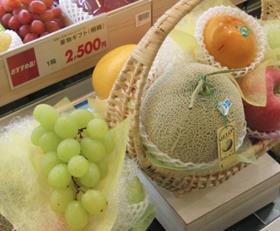
Australia’s table grape industry made a market access breakthrough at the beginning of this month, when Japan announced it had opened its doors to their fruit.
While Australian industry officials are currently awaiting details of the protocol, it is clear that shipments will have to undergo cold treatment for fruit fly. Asiafruit understands that there are three options for cold sterilisation of the fruit: under 1oC for 16 days; under 2oC for 18 days; or under 3oC for 20 days.
The breakthrough comes after the Australian industry spent some A$3.1m on cold treatment verification-based trials, which resulted in access being granted for three varieties – Crimson Seedless, Thompson Seedless and Red Globe.
Michelle Christoe, executive director of the Australian Horticultural Exporters Association, told Asiafruit it is too early to really comment on prospects.
“We don’t yet have a protocol so we aren't across all the rules and regulations,” she said. “We have to wait for the Japanese [quarantine] inspectors and we are required to give 35 days’ notice for them to attend. The formal request only went on 3 February.”
Nevertheless, Christoe admitted the industry is hopeful that its fruit will make an impression on Japanese consumers, particularly at the premium end. “We won’t be the cheapest, but will have good eating quality. Our seedless varieties have the best potential – particularly with the younger consumers and Australia’s proximity to Japan is a clear differentiator,” she said.
Some market development activities have already been undertaken in readiness for access. “The Victorian government last year brought out Japanese buyers and exposed them to horticulture product, particularly table grapes,” Christoe noted. “Austrade has also been very enthusiastic and supportive via its in country trade commissioners. Large retail chains such as Aeon have expressed interest and we trust the Australian Table Grape Association will support their activity.”
Japan’s table grape imports have risen markedly over the past six years, led by Chile and the US. Volumes have grown from 6,612 tonnes in 2008 to 22,759 tonnes last year. Chile is the largest supplier, with shipments having risen from 4,902 tonnes to 12,453 tonnes in the six-year period period, while US sendings have grown from 1,668 tonnes to 9,675 tonnes.
Australian grapes are likely to face stiff competition in the Japanese market, as their peak supply season of March to May clashes headlong with Chile’s, according to Junichi Moriya of major wholesaler-importer Tokyo Seika Trading Company.
“We understand the quality of Australian grapes is competitive with Chile but it might be very difficult for them to compete on price and cost,” he observed. “Another drawback for Australian fruit is the need to undergo cold treatment, which adds to the cost and time of exporting.”



